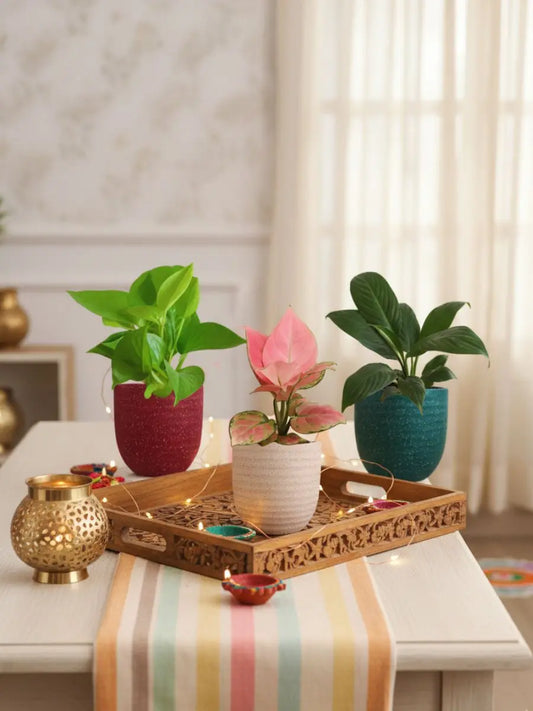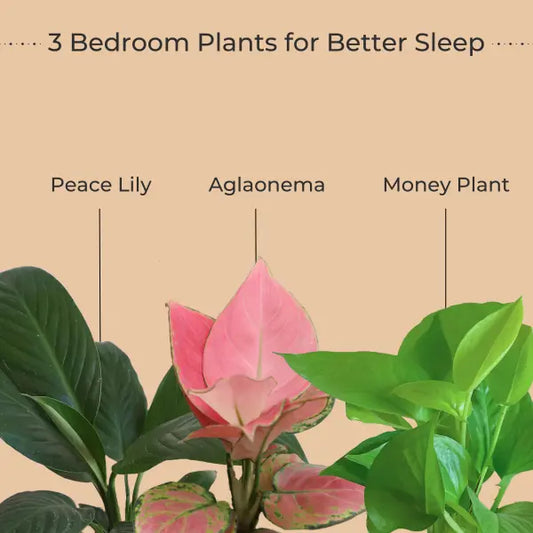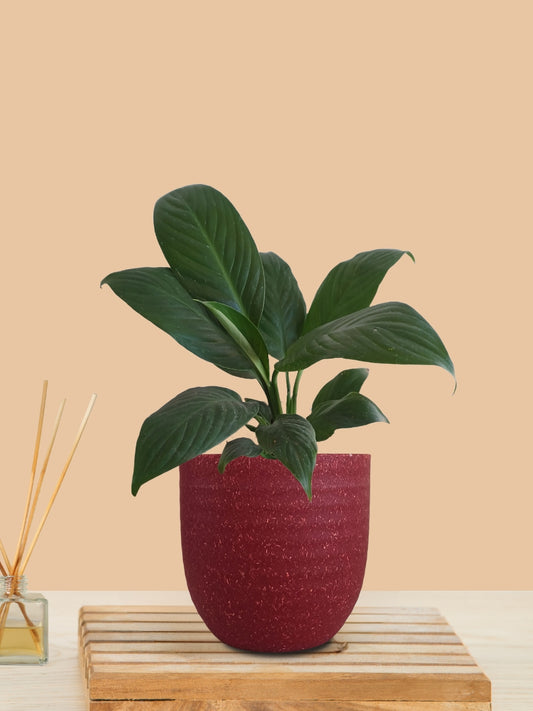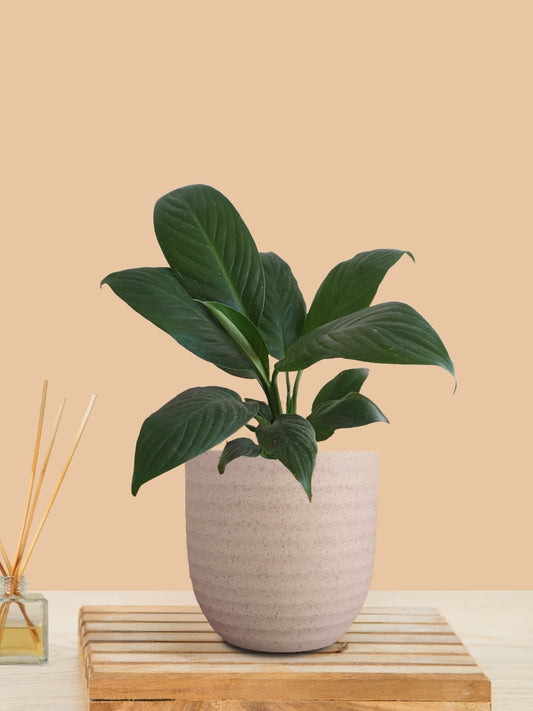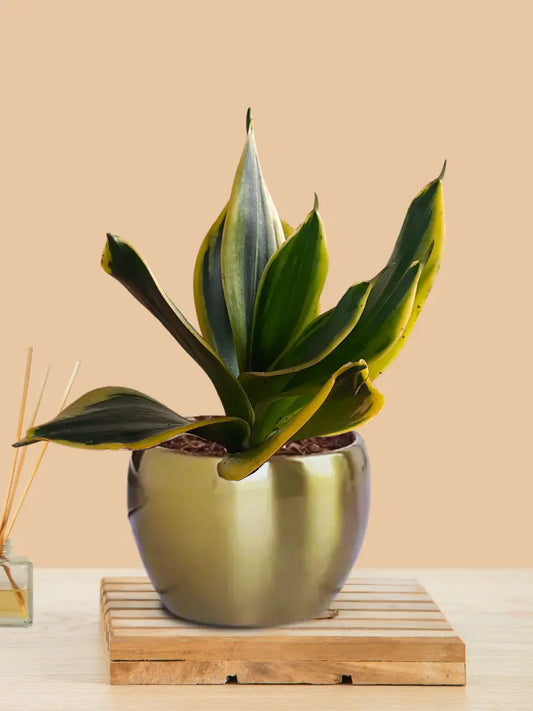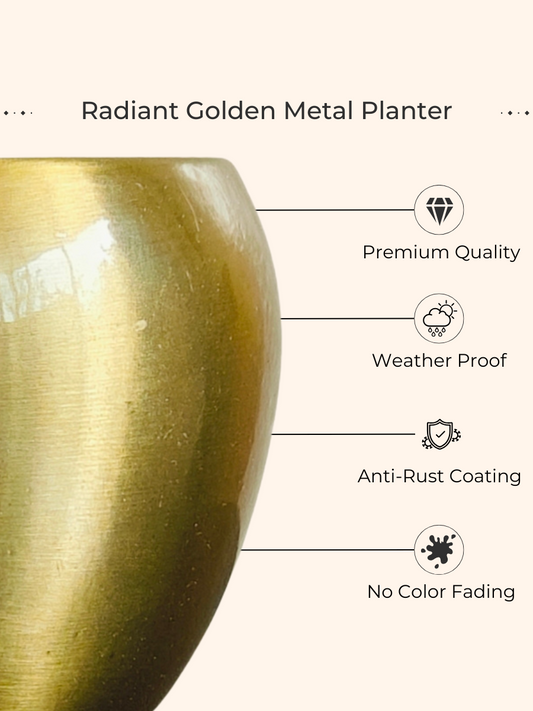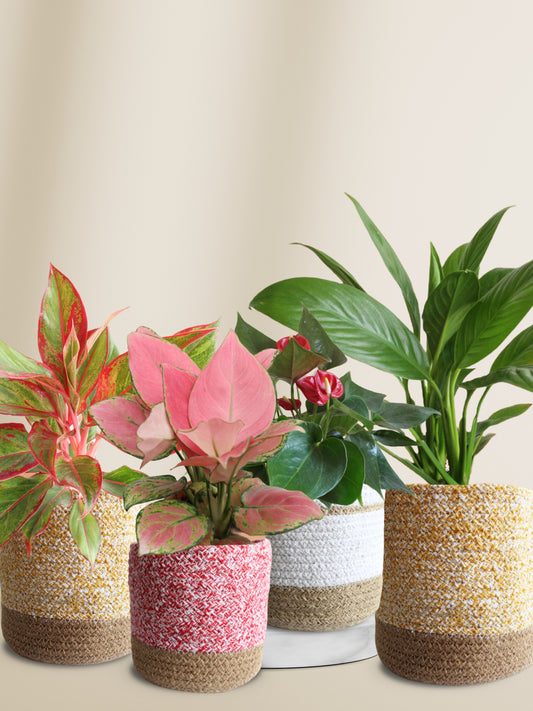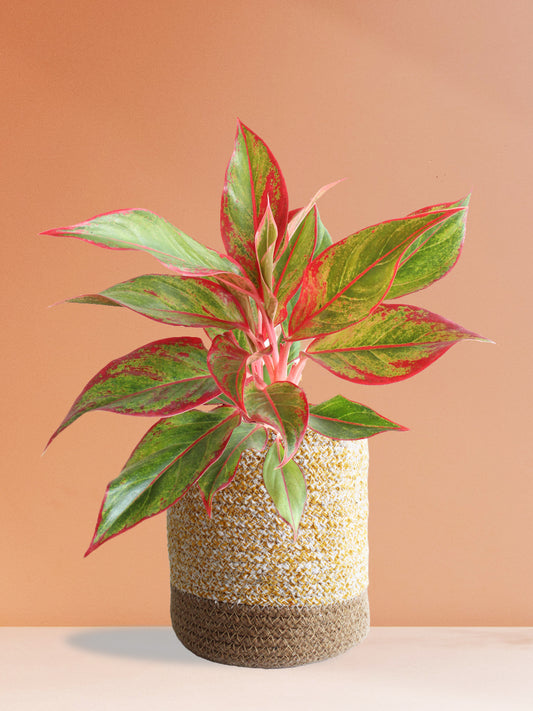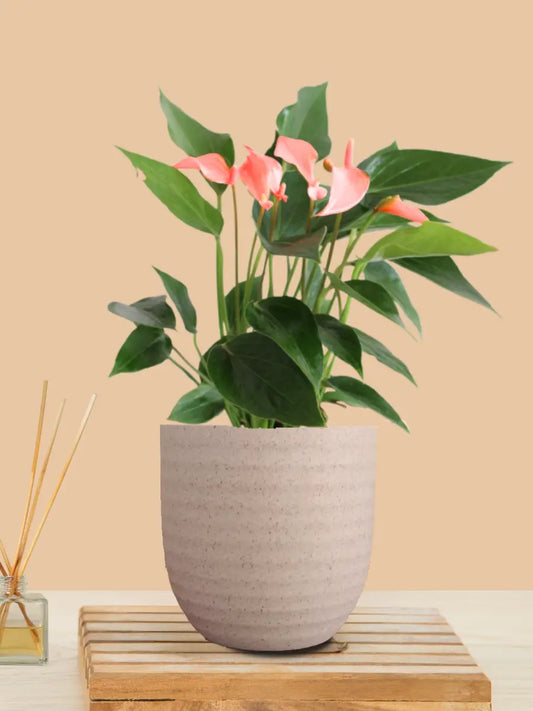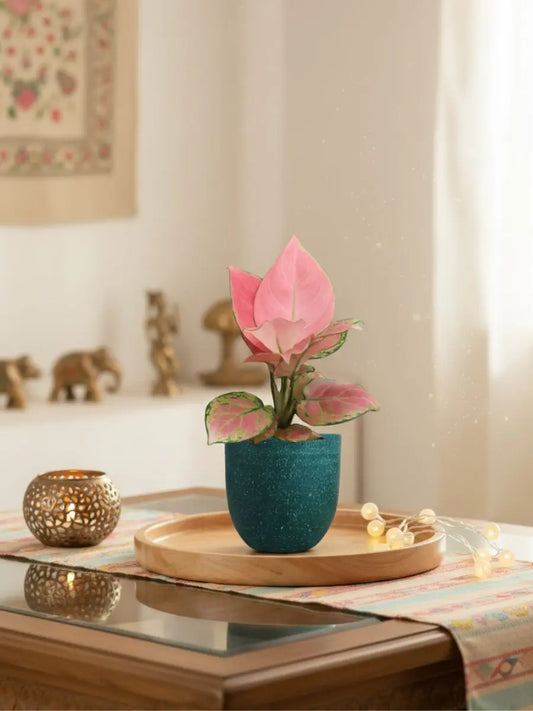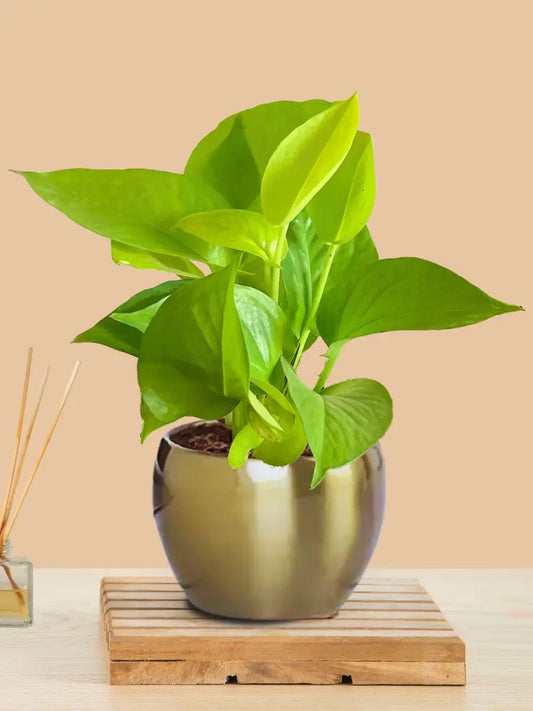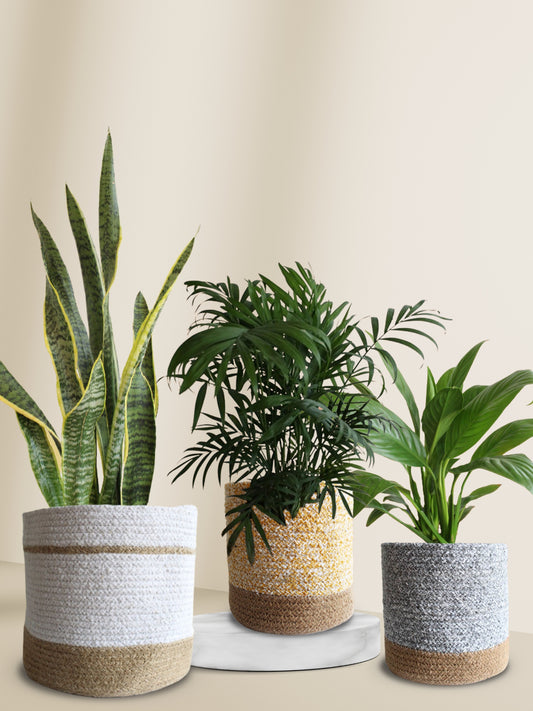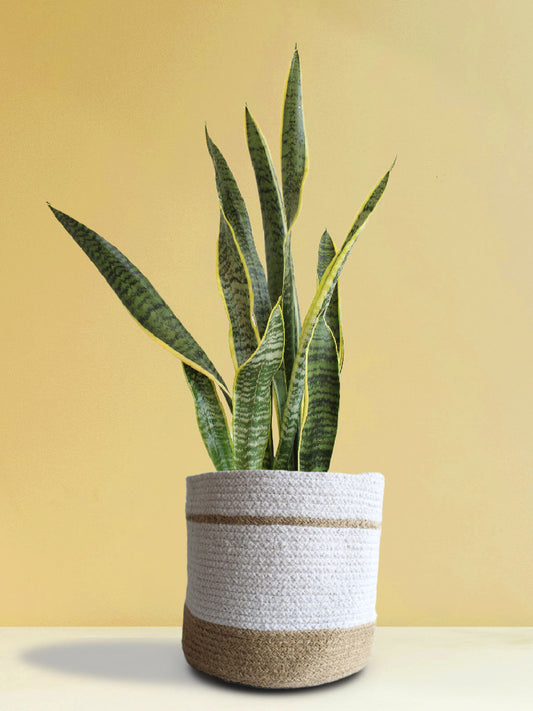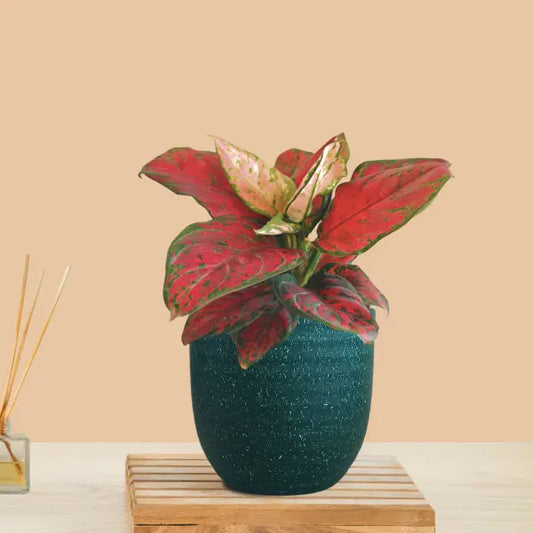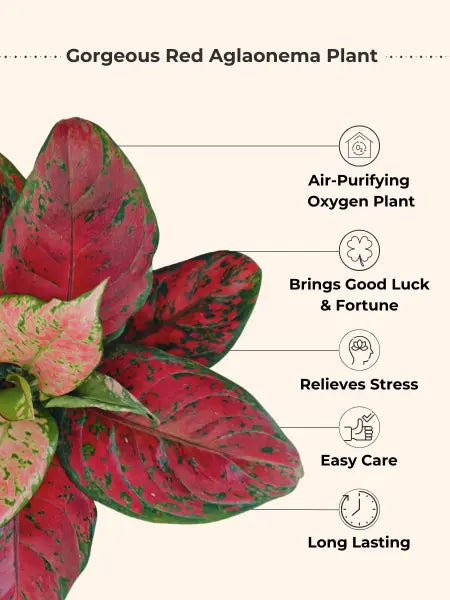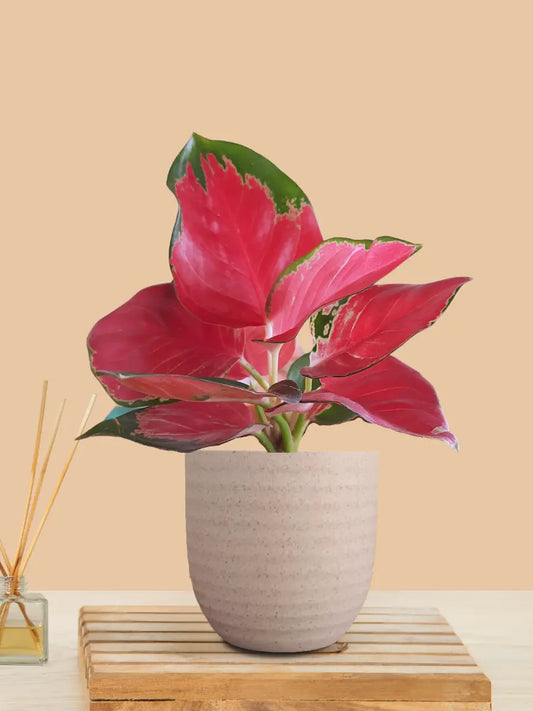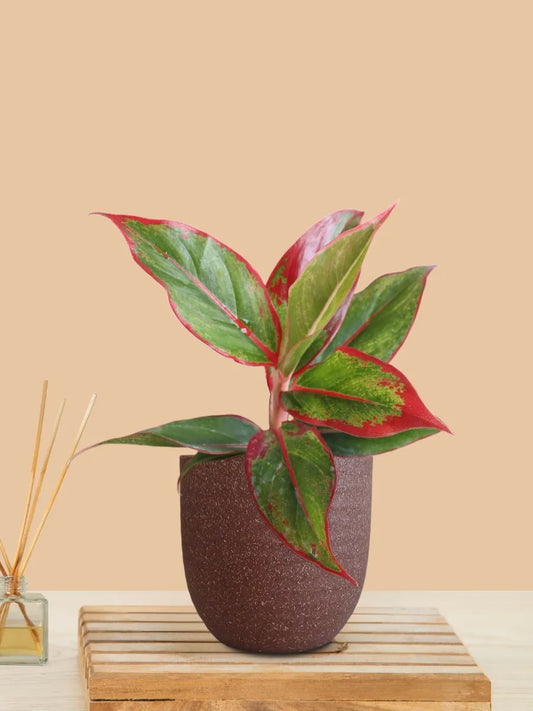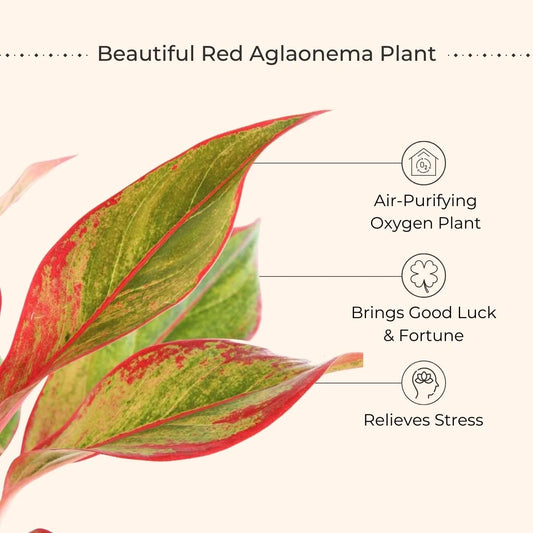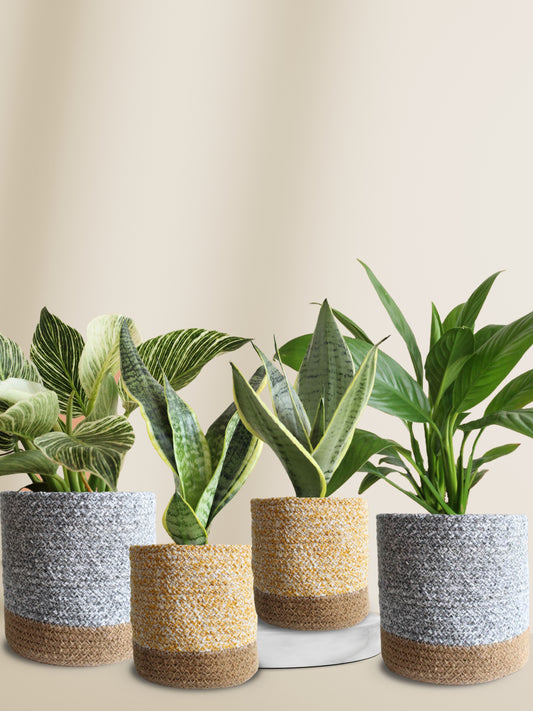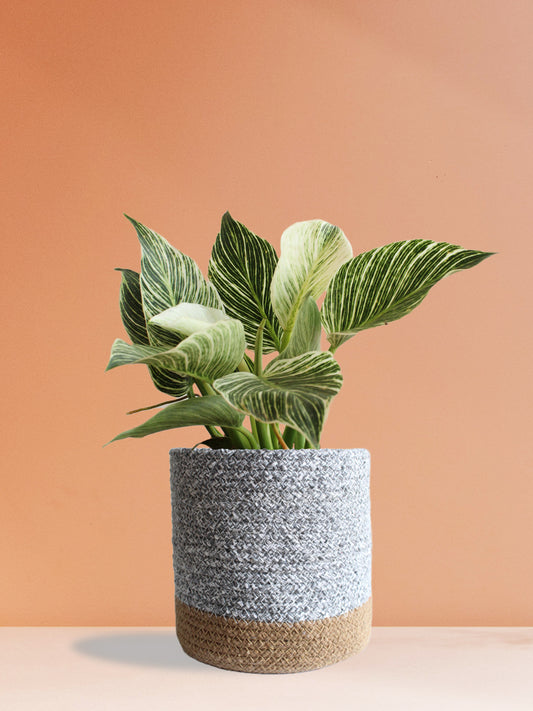
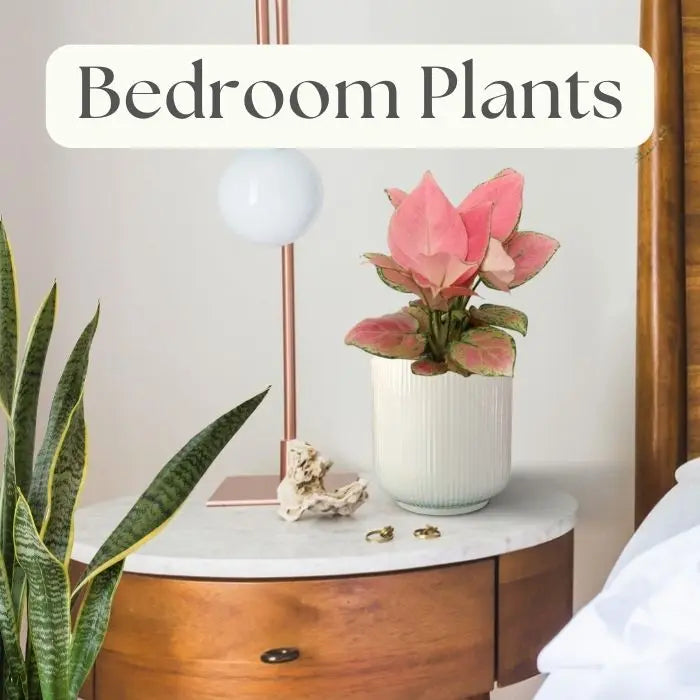
-
Bedroom Plants Combo for Better Sleep (Small)
Regular price ₹ 999Regular priceUnit price per₹ 1,699Sale price ₹ 999Sale -
Peace Lily Green (Small) in Eco Pot
Regular price ₹ 349Regular priceUnit price per₹ 499Sale price ₹ 349Sale -
Lotus Golden Snake Plant (Small) in Golden Metal Pot
Regular price ₹ 349Regular priceUnit price per₹ 649Sale price ₹ 349Sale -
Colorful Air-Purifying Plants Combo for Bedroom
Regular price ₹ 4,724Regular priceUnit price per₹ 6,299Sale price ₹ 4,724Sale -
Anthurium Mini Pink Plant (Small) in Eco Pot
Regular price ₹ 879Regular priceUnit price per₹ 1,099Sale price ₹ 879Sold out -
Aglaonema Pink Anjamani (Small) in Eco Pot
Regular price ₹ 559Regular priceUnit price per₹ 699Sale price ₹ 559Sale -
Money Plant Golden (Small) in Golden Metal Pot
Regular price ₹ 299Regular priceUnit price per₹ 599Sale price ₹ 299Sale -
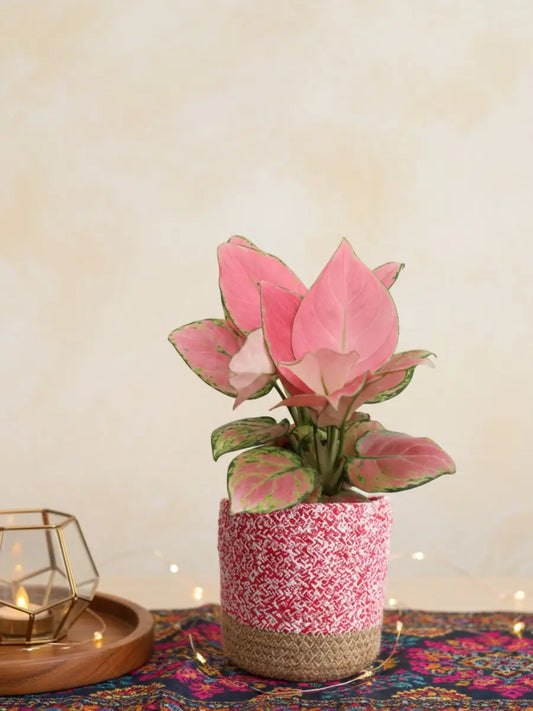
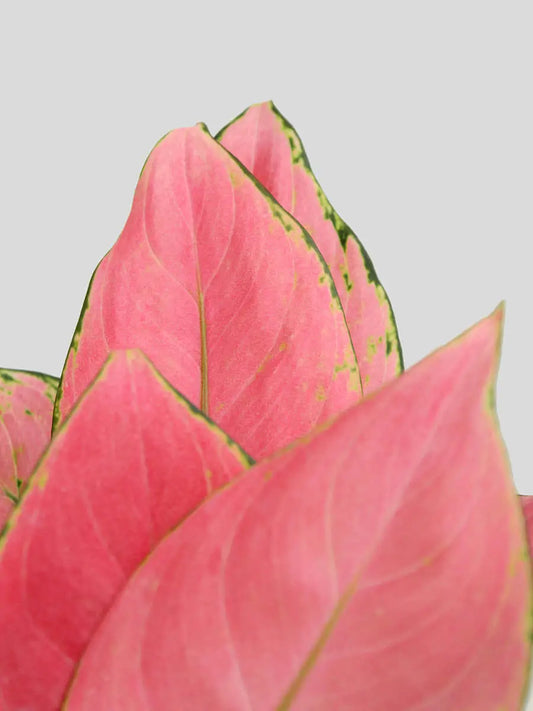 26% Off
26% OffAglaonema Pink Anjamani (Medium)
Regular price From ₹ 699Regular priceUnit price per₹ 949Sale price From ₹ 699Sale -
Green Air-Purifying Plants for Bedroom
Regular price ₹ 4,799Regular priceUnit price per₹ 6,399Sale price ₹ 4,799Sale -
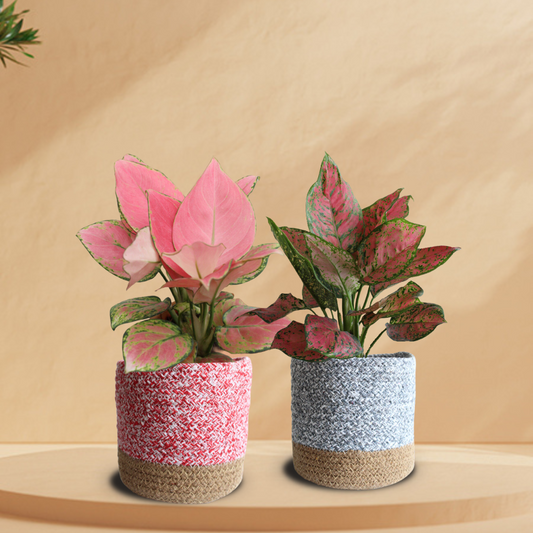
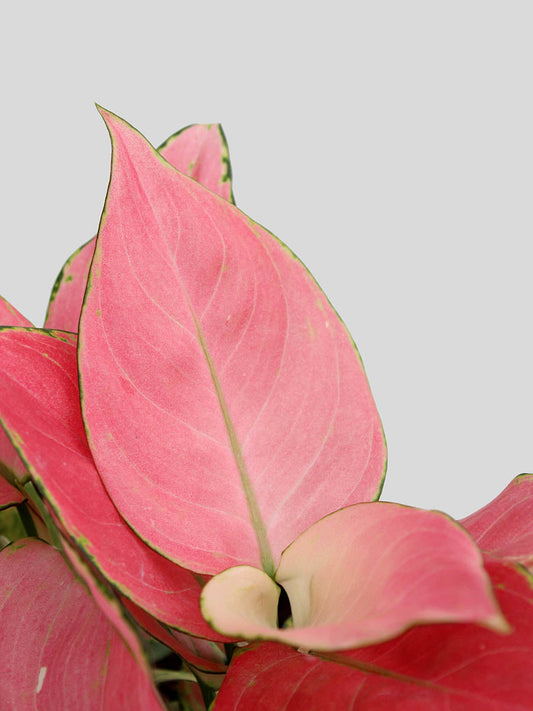 37% Off
37% OffLovely Pink Duo
Regular price ₹ 1,699Regular priceUnit price per₹ 2,699Sale price ₹ 1,699Sale -
Aglaonema Red Beauty (Small) in Eco Pot
Regular price ₹ 639Regular priceUnit price per₹ 799Sale price ₹ 639Sale -
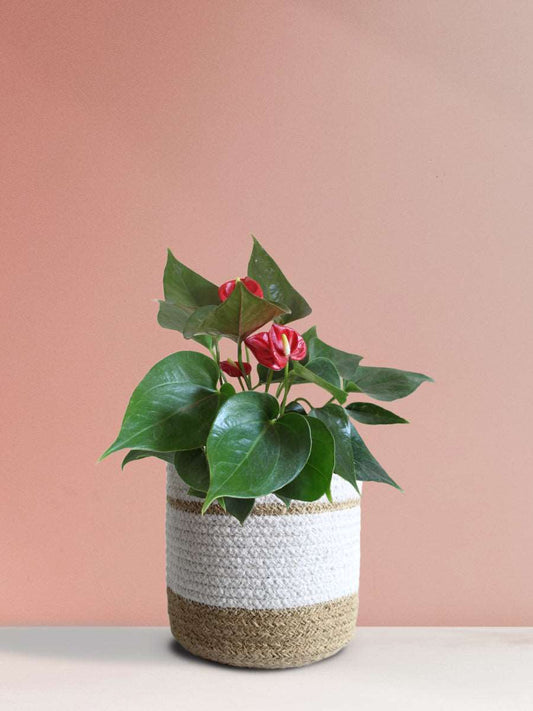
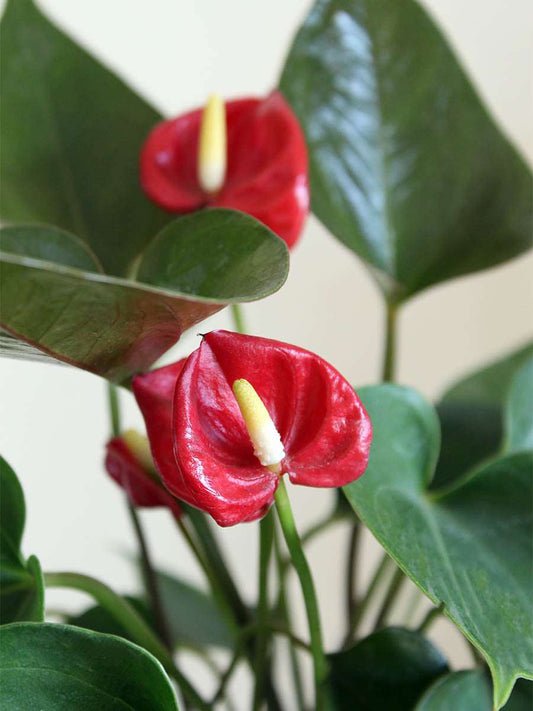 Sold out
Sold outAnthurium Mini Red (Medium)
Regular price From ₹ 879Regular priceUnit price per₹ 1,099Sale price From ₹ 879Sold out -

 Sold out
Sold outLucky Bamboo Plant
Regular price From ₹ 880Regular priceUnit price per₹ 1,100Sale price From ₹ 880Sold out -
Aglaonema Cherry Red Plant (Small) in Eco Pot
Regular price ₹ 699Regular priceUnit price per₹ 1,199Sale price ₹ 699Sale -
Aglaonema Red Lipstick (Small) in Eco Pot
Regular price ₹ 399Regular priceUnit price per₹ 599Sale price ₹ 399Sale -
Classy Air-Purifying Bedroom Plants Combo
Regular price ₹ 4,386Regular priceUnit price per₹ 5,849Sale price ₹ 4,386Sale
Let customers speak for us
Buy Plants for Bedroom Online
Many systematic scientific studies show that indoor plants improve mental and physical health and reduce stress. We at Greenkin blend nature and interior design to create an unmatched, sustainable, and vivid bedroom living experience. In addition to beautifying your bedroom, plants purify the air and improve sleep. So, whether you're looking to take advantage of vertical space with pothos or reimagine "aesthetic" with anthuriums, there are a wide variety of indoor plants for bedrooms to choose from.
Scroll down to learn everything about indoor plants for bedrooms. These bedroom air quality plants can be kept in various places depending on the sunlight requirements of the plant and the sunlight that the room receives. Find out more about bedroom plant ideas, how to use plants as decorative accents, and Vastu principles for successful plant arrangements in the bedroom. In addition, you will find links to a wide selection of houseplants on this page
. Browse our Greenkin bedroom plant collection for a variety.
Why Choose Greenkin to Buy Plants for Your Bedroom
Bringing nature into the comfort of your home has never been easier than with Greenkin's carefully selected collection of plants. Greenkin is trusted by many plant owners to buy high-quality houseplants. We take care to thoroughly inspect your bedroom plants at every stage, from selection to packing for shipment, to ensure their health, color, and appearance. On top of growing healthy plants, our plants, including bedroom plants, are paired with care instructions and FAQs so that you can have your plant grow healthily at home.
As an additional option, you can consider getting some lovely Greenkin bedroom plants as a unique and thoughtful present for any member of your family, friends, or circle of corporate partners . So, let's buy the right bedroom complement from our stylish green plants today.
Things to Consider Before Buying a Plant for a Bedroom
What matters most before buying bedroom indoor plants? The following are some essential features that must be considered before buying plants:
- Assess the size and setting before buying a plant for your bedroom: According to Feng Shui and Vastu experts, placing plants in your sleeping area (bedroom) can energize the room as long as there is adequate space and light.
- Knowing how much light enters your space during the day: where you read for an hour in the afternoon needs different greenery than where you watch the sunrise. Examine your bedroom's four corners. Some get wonderful hour sunsets, others nothing (like a bedroom with no windows).
- Choose bedroom plants that fit your lifestyle and expertise: If you're new to gardening or have a busy schedule, try low-maintenance indoor plants for your bedroom. Additionally, low-maintenance plants for bedroom shelves or window sills are ideal for those who want greenery without much upkeep.
- Considerations for Pet-Friendly Homes: If your pets are often in your bedroom, choose pet-safe bedroom plants.
Benefits of Having Plants in Your Bedroom
Not only do indoor plants for bedrooms liven up any space with more color and texture, but they also improve the quality of sleep, promote calmness, increase oxygen flow, and provide many other benefits. The health benefits and vastu benefits of having indoor plants in a bedroom are:
Indoor plants in bedrooms improve air quality:
When it comes to enhancing the air quality in your bedroom, having plants can make all the difference. One major benefit? Their ability to improve indoor air quality. NASA's 1989 Clean Air Study demonstrates that houseplants, including bedroom plants, naturally filter indoor air pollutants like formaldehyde, trichloroethylene, xylene, toluene, and benzene, improving air quality.
Plants are best placed in bedrooms because some indoor plants can create oxygen throughout the night. Certain plants are nocturnal oxygenators. Nocturnal oxygenator plants use crassulacean acid metabolism (CAM) photosynthesis to absorb carbon dioxide at night. This means that indoor plants can produce oxygen 24 by 7!
Indoor plants in bedrooms regulate humidity:
Dry indoor air may cause respiratory issues, sore throats, colds, and skin breakouts. Indoor plants, including bedroom lovely plants, have the ability to enhance ambient humidity by evaporating moisture from their leaves through "transpiration." Plants increase room humidity by producing water vapor through microscopic pores on their leaves, sometimes by 10%. Thus, when room humidity is optimized, it can keep our airways wet, preventing all respiratory illnesses.
Indoor plants in the bedroom boost mental health and well-being:
Another health benefit of Indoor bedroom plants is their relaxing effect. Also, green plants for the bedroom can create a calmer, more relaxing environment for better sleep. Scientifically, they add aesthetic value and aid in air filtration, making your bedroom a more pleasant and healthier environment overall.
Perfectly combining those little pots loaded with living green plants with attractive bedding creates a serene and pleasant sleeping atmosphere.
Vastu benefits of bedroom plants:
Vastu states that plants, especially in the bedroom, help you balance the cosmos and the five elements by harmonizing the wood element with other elements.
East and north are great plant placement directions. Plants (or Feng shui bedroom plants) enjoy the morning sun here. The southeast corner represents wealth, making it ideal for prosperity-associated plants. Interior windows provide natural light, fresh air, and plant growth. Avoid prickly, pointed-leaf, and drooping plants for plant placement since they disrupt the bedroom's pleasant atmosphere.
Remember that room Vastu plants for the bedroom should match their size. Maintain them well and remove dried leaves and dust. Vastu recommends a few well-chosen, healthy plants overloading the room
Placement Guide for Bedroom Plants
Plant placement in a bedroom depends on the amount of sunlight and the kind of plant. Any plant can go in a bedroom. However, plant plants that promote relaxation and sleep to create a tranquil bedroom. Discover the placement guide of plants for bedroom decor, according to factors like:
- Plant's Height and Area Coverage When Placing Indoor Bedroom Plants: Decorate small bedrooms with little plants on shelves, nightstands, or desks. If you have little floor space, hanging creeping vines like pothos or more indoor plants work well.
Use medium or large plants to maximize bedroom space. Floor space, especially corners or between furniture, can be used to showcase larger plants. - Conditions of Light Sources in Bedrooms: Choose indoor plants for your bedroom based on their lighting requirements. Many varieties of plants can thrive in dimly lit environments or shaded areas with sufficient indirect sunlight. Such low-light plants for bedrooms such as Philodendrons, Aglaonemas, Monsteras, Anthuriums, and Palms are suitable for low-light conditions and are ideal for tiny settings, apartments, or urban areas.
No windows? Choose indoor plants for your bedroom that don't need much care or sunlight, like snake plants, ZZ plants, and other low-maintenance plants. Nevertheless, give them grow lights (or artificial lights) to ensure their health. - Environment-Related Factors For Bedroom Plants: People who live in cities with bad air quality are at risk of getting sick. Plants that clean the air, like Areca palm, snake plants, spider plants, and pothos are best-known oxygen plants for bedroom to remove harmful chemicals from the air.
For dry areas, easy-care bedroom plants, like jade plants or snake plants, are ideal because they do well in dry conditions. Mist the plants or lay them on a pebble dish or companion plants like clothes and ferns to create a micro-humid atmosphere if humidity is a concern. For bedrooms with balconies, use balcony plants that like direct sunlight. - Additional Factors to Reflect on About Placing Indoor Bedroom Plants: If you follow Vastu, check each plant's Vastu direction at Greenkin regarding suitable placements to boost positive energy in your bedroom.
Some examples of bedroom greenery ideas are modern themes, ranging from small potted succulents to larger statement plants, depending on your tastes and the available space. Make sure the plants you choose for your bedroom fit well with the rest of the decor and reflect your style. For example, small plants are best displayed in compact spaces like table stands, shelves, or windowsills.
Top 10 Best Bedroom Plants to Buy Online
Explore the best must-have indoor plants to place in a bedroom for elegant green vibes or aesthetic appeal.
- Snake plants: Snake plants are the most worldwide popular, best indoor plants for bedrooms. It has stiff, sword-like leaves with silver, grey, or gold edges. Their remarkable air-purifying ability to turn carbon dioxide into oxygen throughout the day and night makes them the best plants for bedrooms. These resilient plants take minimal care and thrive at any light level, from low to high. It's ideal for beginners or busy individuals who desire a houseplant. In bedrooms, put snake plants on nightstands or bookcases. Add some simple pots or woven boxes for an innovative style.
- Peace Lily: A peace lily is a beautiful, air-purifying and stylish bedroom plant that prefers low-light environments away from direct sunlight. Its white blossoms offer a soothing energy that will make you feel calm. To maximize its growth potential, place The Peace Lily on a side table or nightstand in a humid environment. Additionally, because they are poisonous to pets, keep a watch on them.
- Lucky Bamboo Plant: The Lucky Bamboo Plant has fleshy stalks and bluish-green leaves. The number of lucky bamboo sticks (or stalks) reveals different symbolic meanings, such as love, happiness, wealth, or luck. Vastu Shastra recommends placing a "lucky bamboo" plant in the eastern or southeastern corner of your bedroom for positive vibes. Furthermore, place them in shaded areas and fill their pots with fresh water on a regular basis. You can also use a glass vase with water and stones for a simple look.
- Aglaonema: Aglaonema varieties bloom with striking, colourful, and green leaves. These houseplants are perfect for beginners because they are a low-maintenance plant and an excellent green accessory to the bedroom. Moreover, they thrive in both morning sunlight and indirect lighting, making them ideal for placing indoors on dressers or spacious nightstands in well-lit spaces in bedrooms.
- Anthurium: Anthurium varieties have heart-shaped leaves with striking, colourful foliage that adds a bright splash to bedroom space. It prefers bright, non-direct light. Plant it on a ledge (with a small curtain to screen the light) or a shelf with plenty of indirect light.
- Jade plant: The jade plant’s thick, glossy leaves are thought to represent good luck in Feng Shui. It's perfect for students or adults who strive to improve their wealth and mental clarity. Use it to decorate a nightstand or dresser for a stylish appearance, or position it close to a bedroom window to help with relaxation vibes.
- Money Plant: Money Plant is perfect for bedroom shelves or hanging baskets due to its good luck and trailing branches. This air-purifying plant for bedroom prefers moderate-to-bright indirect light. You can hang them in a macramé holder or let them cascade down the bedroom window or corner, creating an aura of green elegance that is impossible to ignore.
- Philodendron: The philodendron plant's gorgeous variegated leaves are sure to catch the eye. Choosing the perfect Philodendron - upright shrubs, climbing vines with heart-shaped leaves, or colorful foliage plants - can suit any space or aesthetic. It flourishes under strong, indirect light. Whether put on the floor or a raised plant stand, its foliage cascades gracefully, providing your bedroom with an instant greenery boost.
- Areca palm: Areca palm is one of the best pet-friendly bedroom plants that feature dense foliage with vivid green arching fronds and hundreds of leaflets. Its feather-like, highly split leaves on a stalk add a sense of relaxation and daring to any bedroom area. It thrives well in bright, indirect light but not in direct sunlight or humid conditions. Areca palm plants, which are also non-toxic bedroom plants and can add a touch of beauty to any area of a spacious bedroom, are a great choice for people with dogs.
- Monstera Deliciosa: Monstera Deliciosa has fenestrated, deep green leaves with holes. Moreover, it also grows on a support as a vine-like climber. It thrives in every environment, especially in little bedrooms. Its large leaves and modest space add elegance. Alternatively, a large woven basket or a bright ceramic planter with a geometric arrangement can elevate your Monstera Deliciosa.
How to Care for Bedroom Plants
Remember that each plant is different. Understand the needs of the plants you've chosen to ensure they'll thrive in your bedroom. Some of the basic care guidelines for bedroom plants are:
- Watering guide for bedroom plants: Check your Indoor bedroom plants' water requirements daily or weekly to ensure their health. Experts recommend sticking a finger two inches into the soil to check a plant's rewatering status. Avoid watering moist soil. Give them water if it is dry.
- Lighting needs for bedroom plants: Know your plants' light needs. Insufficient lighting can cause yellowing leaves and stunted growth. Adding a growth lamp could become necessary. However, place bedroom plants near a well-lit area or window (if there is one) but away from bright light or sunlight to prevent the scorching of leaves. Additionally, reposition them as needed.
- Fertilisation guide for bedroom plants: Use diluted, balanced fertilizer to stimulate your plants in spring and summer.
- Repotting of bedroom plants: When plants grow out of their pot or bind at the bottom, repot them. Transfer to a larger pot with the fresh plant mix.
- Humidity requirement for bedroom plants: Mist more frequently, use pebble trays to boost humidity for bedroom plants that prefer high moisture levels or group your plants for more humidity.
- Cleaning of bedroom plants’ leaves: Clean your indoor bedroom plants, especially air-purifying plants' leaves, periodically to maximize their efficacy.
FAQ
To put it simply, "bedroom plants" are houseplants that people think will do best in a dark, quiet, and generally comfortable environment typical of a bedroom. These plants are often chosen because they filter air, beautify the room, and improve restful sleep.
Of course, plants can improve bedroom air quality by removing air pollutants and poisons. The best air purifiers are spider plants, snake plants, pothos, anthurium, rubber plants, peace lilies, and more.
Indoor plants add to the beauty of your home, but their true value is in their ability to improve your mental and physical health. Plants are well known for eliminating pollutants from the air, even at night.
The addition of houseplants to a bedroom can have multiple positive effects. They not only reduce anxiety and blood pressure, but they can also improve air quality, promote better sleep, and improve the overall attractiveness of the place.
Yes, keeping plants in your bedroom while sleeping is safe. Most plants make oxygen during daylight photosynthesis; however, orchids, succulents, and snake plants produce a small amount at night using CAM, or crassulacean acid metabolism.
For small bedrooms, it's best to go with small-sized plants. Choose pothos, peperomia, spider plants, Chinese evergreens, and air plants. Try hanging or wall-mounted planters to save floor space.
Various studies have shown that indoor plants can enhance the quality of air in your bedroom, lower tension, and provide a tranquil environment, all of which can help you get a good night's sleep. However, the effect may differ from person to person.
Not directly, but potentially indirectly. Plants have been demonstrated to relieve stress and enhance mood, which could help with recuperation. In addition, several studies indicate that indoor plants help improve air quality. Plants, however, do not serve as a substitute for medical treatment.
Yes! Having indoor plants, including bedroom plants, around might help create a soothing atmosphere and improve concentration during your session. There are hundreds of plants to choose from, many of which have relaxing scents and colours.
Watering, clipping, and observing the steady growth of your favourite fern can be grounding and meditational practices that help you focus.
Bromeliads, specific orchid kinds, and snake plants are among the most often suggested plant varieties for individuals suffering from allergies.
Bedroom plants need different amounts of light depending on their species. Many of these bedroom plants need indirect light. Too much direct sunlight can scorch plants. Beware of intense sunlight. Low-light plants are good for bedrooms. Some ferns, snake plants, and ZZ plants are popular choices.
Checking soil moisture before watering plants works best. To test soil moisture, stick a finger in about two inches. Water your plant when the soil feels dry. Water the pot thoroughly so water drains out the bottom. When water collects in a pot's saucer, it's best to pour it off immediately because standing water causes several issues for plants.
Mist sprays provide rapid humidity but do not hydrate the plant properly. Soil dryness should be your primary worry; to maintain an acceptable humidity level, a dehumidifier or pebble tray can be useful.
Certainly, but limit it. A half-strength balanced liquid fertiliser is usually enough once a month in spring and summer. Plants during the winter are less active, so don't fertilise.
Good drainage is essential for potting mixes. Choose a bedroom indoor plant potting mix like peat moss, perlite, and vermiculite that helps retain moisture and drain.
Usually, indoor plants, including bedroom plants, need less water and no fertiliser during dormancy. Some plants may require an occasional sprinkle or a specific temperature to thrive.
There are a number of factors that are considered, including the plant's size with regard to the space, its texture, colour, light needs, and compatibility with the room's design.
Many plants dislike chilly drafts. Keep them away from the direct flow of air conditioning, or select indoor plants for the bedroom that can withstand it. Cold drafts can cause leaves and soil to dry up more quickly.
Hooks with varying weight limits, tension rods between walls, and over-the-door hangers are all viable solutions for safely hanging plants.
You should repot your plant when its roots grow out of the drainage holes or when it becomes rootbound. Choose a larger pot and a new potting mix.
Snake plants, ZZ plants, pothos, succulents, and some cacti are neglect-resistant, making them ideal for those who cannot water them regularly.
Terracotta absorbs water quickly, making it suitable for plants that are prone to overwatering. Plastic retains water, providing the plant with more moisture for a longer period of time. Ceramic pots are usually attractive. Make a decision depending on your plant's demands and how you water it.
Chemicals and cleaners damage leaves, so wiping them with a gentle, damp cloth is best. For plants with fuzzy leaves (particularly for bedroom air-purifing plants), use a soft personal care product brush to eliminate dust.
Yes, regular rotation minimises unbalanced development, as most plants incline towards the main light source. Every month or so, turn them by one quarter.
Snake plants, areca palms, orchids, and certain succulents have the ability to perform CAM photosynthesis, allowing them to produce oxygen in the nighttime.
Some plants can help with foul air and soothe the senses. However, they do not address the underlying cause of snoring.
The relaxing aroma of lavender and other aromatic plants has led many to believe it can accomplish this. It may benefit some people with headaches, although there has been little research on the subject. To determine what causes your migraines, you must follow a doctor-prescribed, carefully planned plan.
To keep their stunning patterns, variegated plants usually need more light than solid-coloured plants, so be sure to give them plenty of indirect sunlight.
Yes, with the right conditions, a number of vines thrive indoors, including jasmine, pothos, and English ivy. Consider installing a trellis or guide wires near the windowsill.
Yes! To create a beautiful, natural chandelier effect, use macramé hangers, a multi-tiered plant stand, or a hanging basket with a variety of trailing plants.
Vastu Shastra is an ancient Indian architectural discipline that suggests putting plants in bedrooms to bring good fortune, calm, and serenity. Some examples of these plants include the peace lily, snake plant, jasmine, money plant, and areca palm.
If you want to arrange plants in your bedroom according to Vastu principles, east and north are good plant locations in the bedroom. The morning sun benefits these plants. Plants associated with prosperity thrive in the southeast corner, which represents wealth. It's best to avoid thorny, pointed-leaf, and drooping plants in the bedroom.
If you have a pet, your bedroom needs pet-friendly plants. Lilies, pothos, and certain philodendrons harm cats and dogs. Before adding a plant to your home, analyse its pet safety.
Most plants need darkness to cycle naturally. Consider using a grow lamp with a timer for plants that require extra daylight.
Spider mites, mealybugs, and fungus gnats plague bedroom plants. Identify and treat the pest. Isolate afflicted plants. If infestants are mild, apply neem oil or insecticidal soap for lifestyle options.
Humidity, underwatering, and cold drafts often cause brown leaf tips. If your plant develops brown spots or patches, it may have a disease or pest infestation. To help it recover, first we must identify the problem.
You can add some greenery to your bedroom with the help of artificial plants, but they can't replace real plants when it comes to air purification and relaxation.
Common varieties include Anubias species, Java fern, lucky bamboo, water wisteria, and certain mosses. You should find out exactly how much light and care these choices need.
Sound barriers like dense foliage or well-placed planters may certainly help minimise noise pollution.
Greenkin has many beautiful low-light choices. Bookshelves, nightstands, or places with indirect sunlight are the best places to put them.
Yes, floor corners and areas between pieces of furniture are ideal for displaying larger plants in a bedroom.
Most certainly! Indoor plants for a bedroom or any living room are thoughtful, durable, and suitable for a variety of occasions. Include a handwritten note to add a special touch to a present.
Certain plants, such as citronella, produce fragrances that may slightly repel mosquitoes. However, their efficacy is limited to stuff and shouldn't replace other precautions.
Yes, it does. Green typically evokes peaceful and natural feelings, yet particular flowers may inspire enthusiasm and brightness.
Some examples of indoor bedroom plants whose leaves have odd shapes, colours, or patterns, such as those with silvery specks or white and green stripes (as in a Calathea or Prayer plant), or that are so black or purple that they appear almost opaque.

